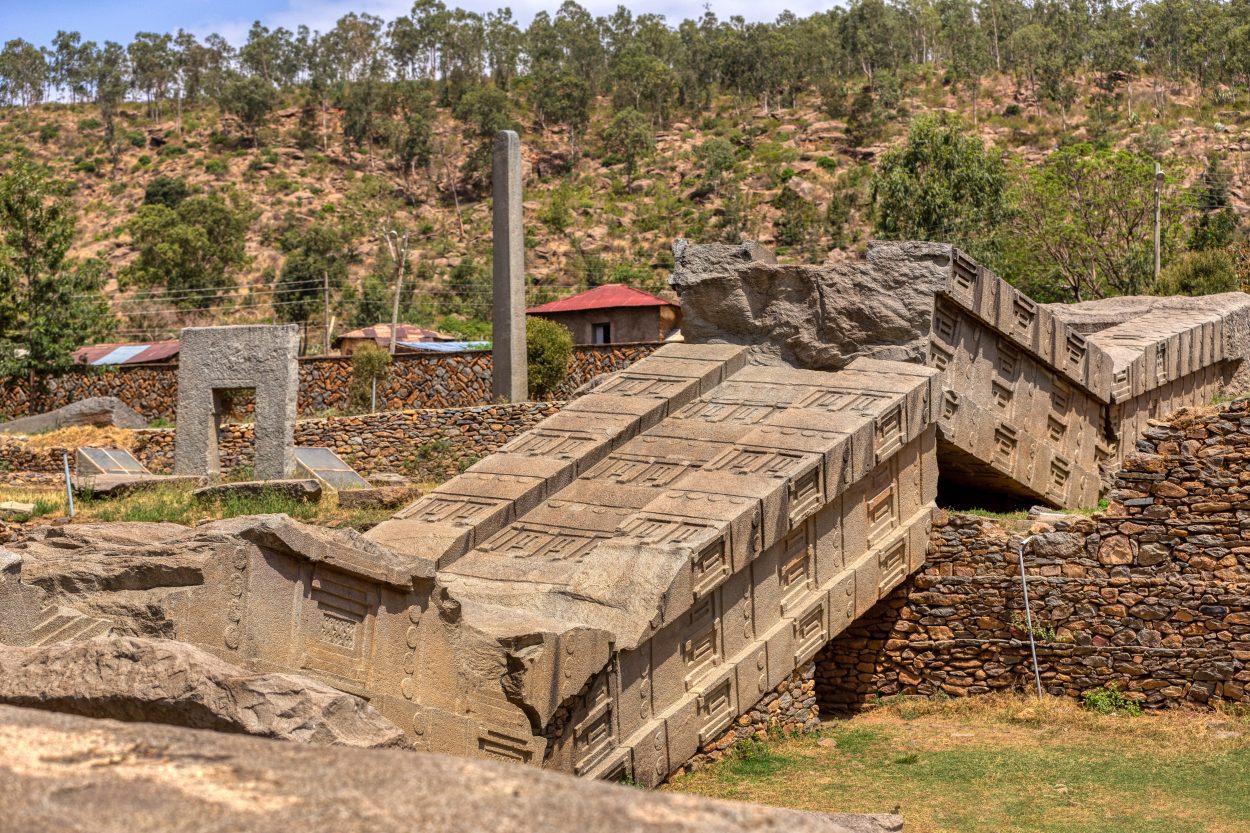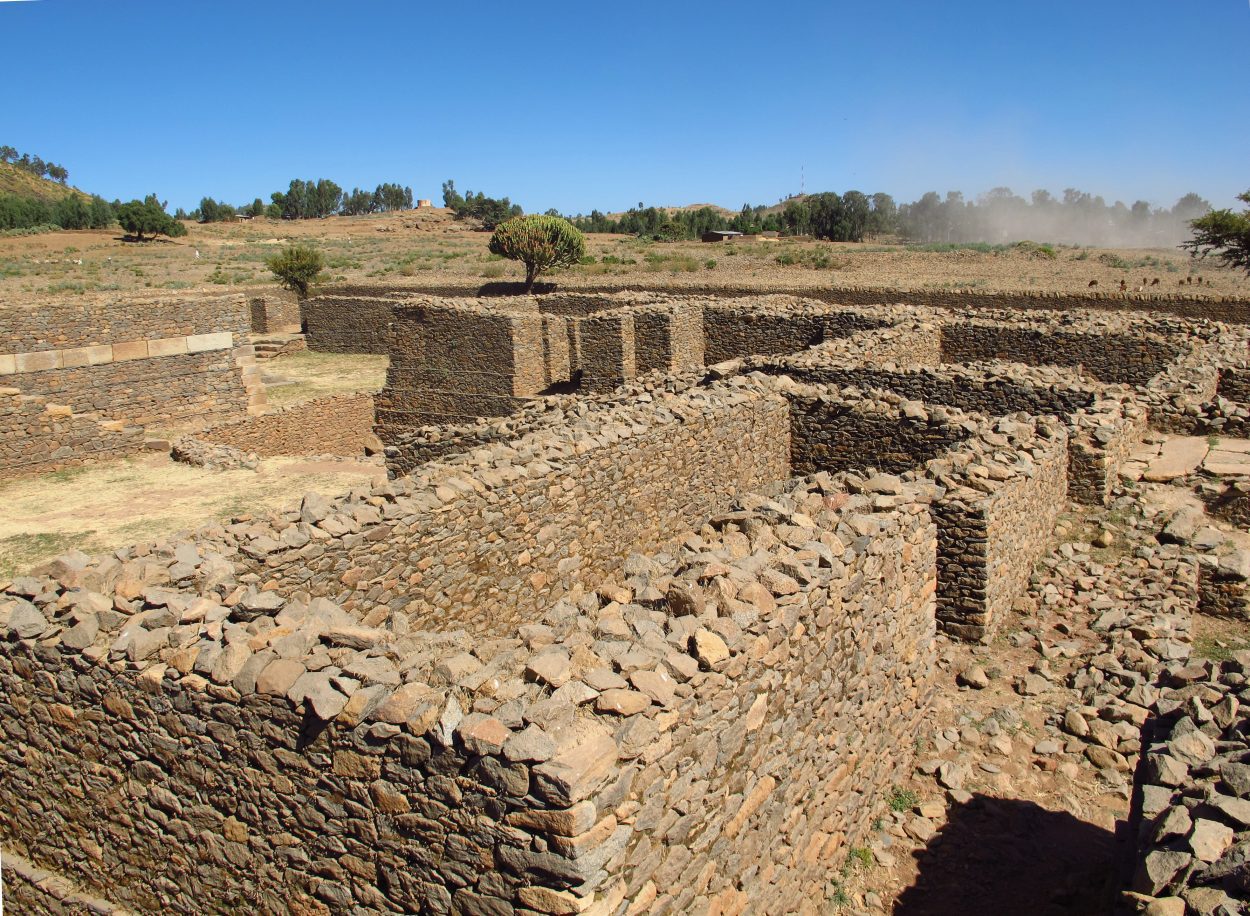Aksum, also called Axum, is the ancient capital of the Aksumite Empire, situated in the present-day Tigray Region of Ethiopia.
The Aksumite Empire emerged in the former historical kingdom of Dʿmt, first documented in a trading guide called the ‘Periplus of the Erythraean Sea’ from around the mid-1st century AD.
According to the Periplus text, the position of the Aksumite Empire in international terms, played an important role in the transcontinental trade route between Rome and India from an early stage. Aksum was sufficiently remote never to have come into open conflict with Rome, nor suffered from punitive expeditions from nearby kingdoms such as Egypt or Meroë.
The Aksumite Empire began to mint coins from about AD 270, mimicking the design of traditional Roman coins with a bust of the ruler in profile. Coinage gave the Aksumite economy a central emphasis from which every aspect of the state’s functions could operate, with the Aksum monetary system of coinage linked with that of the Romans and Byzantines for trade.

The Empire extended across most of present-day Eritrea, northern Ethiopia, Western Yemen, and parts of eastern Sudan. The Aksumites developed a civilisation of considerable sophistication, and a unique alphabetic system called the Ge’ez script (also known as Ethiopic), evolving into an abugida segmental writing system.
The Empire was centred on the capital of Aksum near the base of the Adwa mountains, situated to control both the highland and coastal regions of northern Ethiopia.
Water appears to be an important element to the Aksumites, as the name of Aksum is thought to be composed of two works, ‘ak’ and ‘shum’, the first of Cushitic and the second of Semitic origin, roughly translated as ‘water’ and ‘chieftain’.

The city reached its apex during the 3rd and 4th century AD by the construction of monumental royal tombs, each marked by a huge monolithic stelae. The stelae were ornately carved with false doors and windows, the largest of which measures 33 metres in height (comparable in size to the larger obelisks of Ancient Egypt), supported by a massive underground stone counterweight.
In the centre of the city was the Ta’akha Maryam, a giant 6th century palace complex that covered an area of 103,334 square metres, much larger than many contemporary palaces found across Europe at the time.
To the west is the Dungur, known locally as the Palace of the legendary Queen of Sheba. The Dungur was a multi-storey palace complex that dates from the 7th century AD, covering an area of around 3,250 square meters.

How widespread the city was formerly is not yet known, but it has been assumed that less permanent habitations were constructed around the substantial dwellings of the Ta’akha Maryam, the Dungur, and other large structures such as the Enda Sem`on and Enda Mikael as described in the 15th century ‘Book of Aksum’.
The slow collapse of the empire started around the 7th century, further escalated by the Persian presence in the Red Sea that caused Aksum to suffer economically. The population of the city went into decline due to intensive farming that caused severe erosion, in combination with a loss of the international profits generated from the exchange network it had developed over the centuries.
The Aksumite Empire ended with the last King, Dil Na’od who was defeated by his former General Mara Takla Haymanot, founding the Agaw Zagwe dynasty. According to legend, a son of Dil Na’od fled in exile, whose descendants eventually overthrow the Agaw Zagwe and established the Solomonic dynasty around AD 1270.
Header Image Credit : Matyas Rehak – Shutterstock





